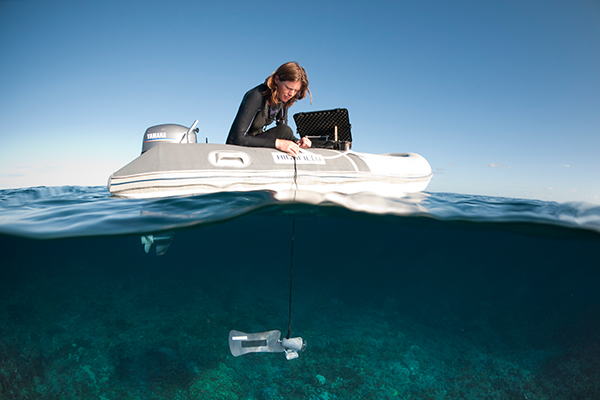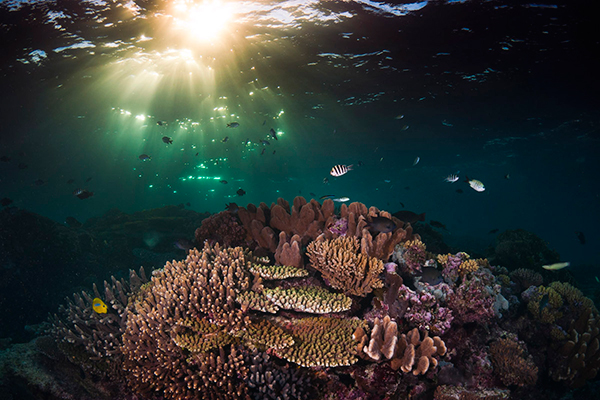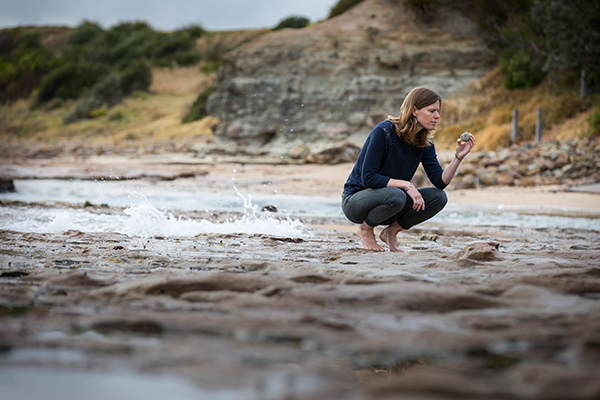August 14, 2014
Quest to map the Great Barrier Reef
Mapping the Great Barrier Reef to track how it's faring in the face of climate change.

Scientists from UOW are on a quest to map the Great Barrier Reef in an effort to track how it is faring in the face of climate change.
Dr Sarah Hamylton (pictured above), from UOW’s School of Earth and Environmental Sciences, has recently returned from 21 days sailing on a 40-foot catamaran around the southern Great Barrier Reef.
Leading the Joint Benthic field and Remote Sensing Survey of the Capricorn-Bunker Group (which sits approximately 80 kilometres east of Gladstone), Dr Hamylton and her team, with the support of UOW's Global Challenges Program, visited more than 1,400 sites to verify whether the reef had changed in the past 12 years.
This trip is part of a larger project, which in collaboration with the University of Sydney and the University of Queensland will draw on satellite imagery of the earth’s largest living structure, to accurately map the vast expanse of the region’s southern islands and associated reef platforms.
Dr Hamylton said while certain pockets of the Great Barrier Reef are in rapid decline, the Southern region, around the Capricorn-Bunker, is fairing quite well and ongoing research will enable us to better predict how it might react to environmental changes in the future as climate change worsens.
“We’re happy to report that some of the shallow communities up on the reef flat including corals, algae and sponges appear to be thriving,” Dr Hamylton said.
Dr Hamylton, who has been mapping coral reefs all over the world, including Fiji, the Seychelles, the Red Sea and Thailand, for the better part of a decade, said her team hopes to use the digital maps generated to quantify calcification, a key process that underpins many aspects of tropical coastal environments.

“Calcification is the process by which marine organisms such as corals, algaes and shellfish build a rigid skeleton by deriving calcium carbonate from ions that are freely available in seawater,” Dr Hamylton said.
“Without calcification, these organisms wouldn’t have the structural integrity to withstand the everyday trials of living in the ocean, such as exposure to waves and storms.
“Unfortunately that process is now threatened by several aspects of environmental change, including ocean acidification, elevated sea surface temperatures and increased frequency and intensity of cyclones,” she said.

However, preliminary results are encouraging, with the team calculating the reefs of the Capricorn-Bunker Group are producing 624,000 tonnes of calcium carbonate per year – a volume equivalent to about 2000 Olympic swimming pools.
“This makes the communities that live on the reefs, such as corals and algae, real unsung heroes because of the work they do to build up their skeletons through the process of calcification. This helps to regulate seawater chemistry and build up the structural architecture of the reef to produce the reef platforms and carbonate sands that make up reef islands and beaches,” she said.
Dr Hamylton said her team will now focus on using their data to study how various aspects of environmental change, such as ocean acidification, sea-level rise, rising sea surface temperatures and increased frequency and intensity of cyclones come together to influence this key ecosystem service provided by the reefs.
Photos: Matt Smith.